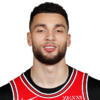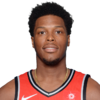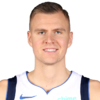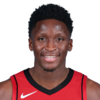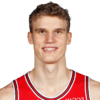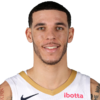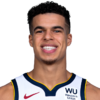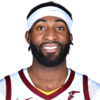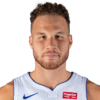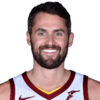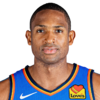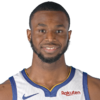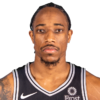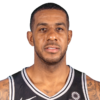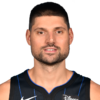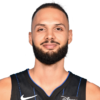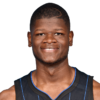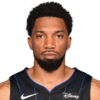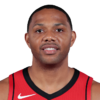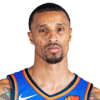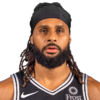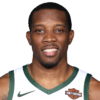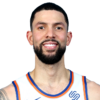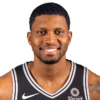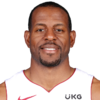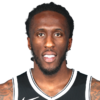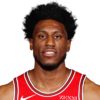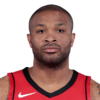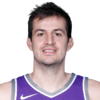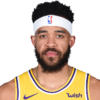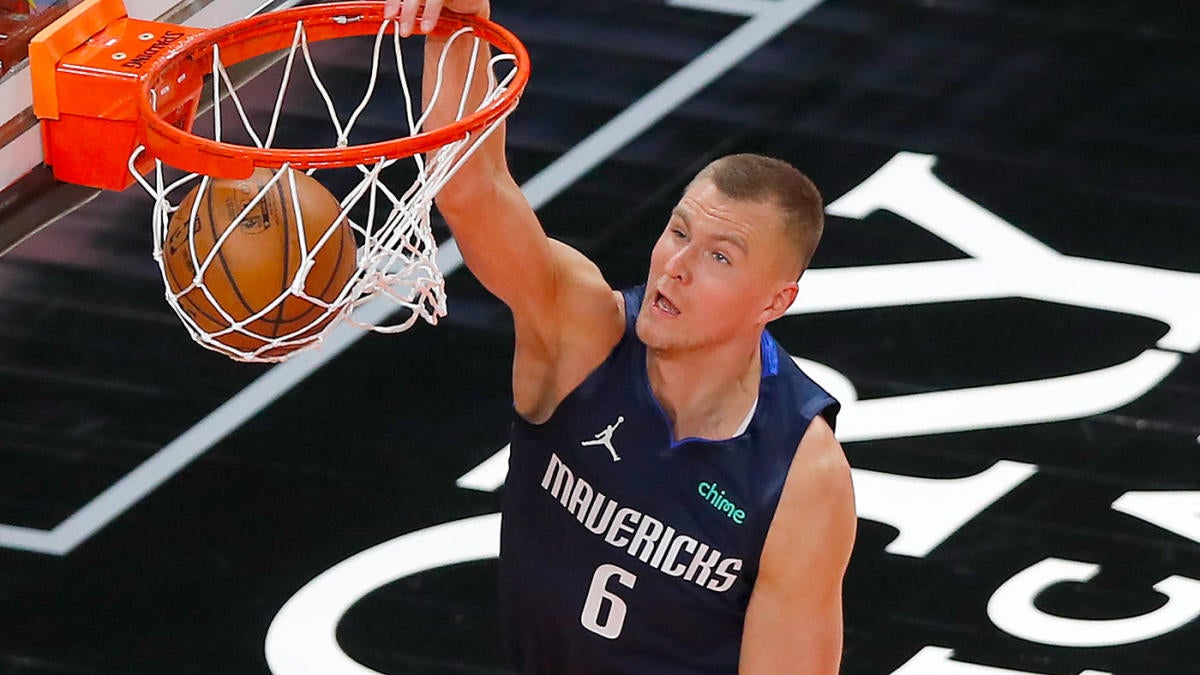
The NBA trade deadline is a month away. Given that both conferences’ standings are bunched up in the middle, it’s still not completely clear who the buyers and sellers will be, but it’s getting more difficult for certain teams to convince themselves they still have a shot at making something out of this season. Derrick Rose has already been moved, and two former All-Stars who shared a frontcourt for a playoff team a couple of years ago have been shelved.
This is a primer for trade season, a list of 40 players who might be moved. It will be updated and expanded multiple times before the March 25 deadline. (Stats reflect games played through Feb. 23.)
Please check the opt-in box to acknowledge that you would like to subscribe.
Thanks for signing up!
Keep an eye on your inbox.
Sorry!
There was an error processing your subscription.
Is he available?
There are some players whose names are bound to come up in trade speculation regardless of how adamant their teams are about keeping them. There are other stars and potential stars who might be available at the right price, but are in a more murky place. This is the part of the list with most of the big names.
Washington won five straight games before a 19-point loss to the Clippers on Tuesday, and it continues to maintain that its franchise player isn’t going anywhere. Beal is averaging a league-best 32.7 points on 59.1 percent true shooting. He’s 27 years old and starting in the All-Star Game. It is understandable that the Wizards want to do everything they can to build around him, especially if he seems content to play out the season before reevaluating things. One has to wonder, though, just what kind of offer would convince them to pivot from their plan. Could they get the same type of package the Rockets got for James Harden? Would they really turn that down?
LaVine is having the best, most complete season of his career and is a deserving All-Star. Given that he’s 25 years old and under contract until 2022, the Bulls should not be in a hurry to trade him. We’re just a couple of months removed, however, from LaVine and the front office failing to agree to a contract extension. If Chicago wants to play the long game, it could still potentially sell (extremely) high on LaVine, move its veterans — more on them later — and take itself out of the short-term playoff picture. Seems much less likely now, though.
The Raptors’ slow start predictably led other teams to surmise that Lowry might be on his way out. They’ve turned their season around, though, and the type of team most interested in a soon-to-be 35-year-old point guard typically isn’t the type of team that can easily trade for a $30.5 million contract. If Lowry informs Toronto that he doesn’t plan on re-signing as a free agent, you’d think the front office would try to move him. Otherwise, this remains a mutually beneficial partnership, and there are non-sentimental reasons it could continue beyond this season.
Mark Cuban denied that the Mavericks have even discussed Porzingis with other teams, but there is at least some smoke here. Rival executives believe that they’ve explored the idea of trading him, per Bleacher Report’s Jake Fischer, and the front office has reached out to the Golden State Warriors to gauge their interest, per SNY’s Ian Begley. At his best, Porzingis is the kind of player who would normally be untouchable: A 7-foot-3 dude who makes deep 3s and protects the rim at an elite level. Based on his recent play, however, it is fair to be concerned about the rim-protection part of the equation. If Dallas thinks Porzingis will remain a defensive liability, it would make sense to trade him to a team that disagrees.
Ideally, the Rockets would have had more than two full months to evaluate Oladipo and how he might fit long term before deciding whether or not to flip him at the deadline. Instead, as a result of a foot injury, they’re going to have to figure it out based on a much smaller sample. He has played just 11 games in Houston, just six of them alongside big man Christian Wood, who is sidelined with an ankle injury. Oladipo turns 29 in May and is on a $21 million expiring contract; potential suitors need to be confident about his health and his willingness to re-sign.
You know the story by now: Collins didn’t sign a rookie extension, and he’ll be a restricted free agent in the offseason. The Hawks acquired center Clint Capela at last year’s deadline, big man Onyeka Okongwu in the draft and stretch 4 Danilo Gallinari in free agency, signaling that Collins might not exactly be indispensable. While Atlanta has had a strange season, Collins might have more trade value than he did a few months ago, having shown real improvement as a defender. Teams already know what he can do offensively when the floor is spaced.
Like Collins, Markkanen was eligible to sign a rookie extension before the season and will instead hit restricted free agency. He hasn’t played in weeks because of a shoulder injury, but his first 14 games under Billy Donovan represent one of the best stretches of his career. Not only did he shoot 3s more frequently and accurately (39.6 percent on 8.5 attempts per 36 minutes) than ever before, he shot 65.5 percent inside the arc, a drastic improvement. Markkanen’s defensive shortcomings remain, though, as do lingering doubts about inconsistency. If Chicago intends to make Patrick Williams a full-time 4, a Markkanen trade — or a sign-and-trade a few months from now — is the simplest way there.
Same situation, and Ball was reportedly available in January. Since then, though, he has completely turned his season around. In February, Ball has shot 47.4 percent from 3-point range on 7.9 attempts per game, and the Pelicans’ offense has soared, especially when their much-criticized starting lineup has been on the court. Given his continued brilliance as a passer and a defender, perhaps the best move New Orleans could make is not trading him. At the very least, the price has gone up.
Essentially, the Nuggets need Porter to develop into a star or they need to trade him for one. He’s 22 years old, with less than 100 NBA games on his resume, including last season’s run to the conference finals, in theory the exact type of player who could be the centerpiece of a blockbuster trade offer. If you’re on the receiving end of that offer, though, you need to figure out how comfortable you are with his still-glaring defensive issues and his history of back injuries.
It’s complicated
No contract is untradeable, as evidenced by the Wizards and Rockets swapping point guards on the second day of training camp. There are several players, however, whose unwieldy salaries make trades particularly difficult to construct, even if their teams are motivated to move them.
Drummond hasn’t played since Feb. 12, but his days in Cleveland were numbered the day that they snuck into the James Harden trade and took Jarrett Allen off Brooklyn’s hands. There are certainly teams that can use the 27-year-old center, provided that he is as active as he was earlier this season on defense and is willing to accept a significantly smaller offensive role than the one he’s been playing. The problem is that he makes almost $29 million and the NBA has rules about salary-matching. Last year, Detroit dumped him to the Cavs for expiring contracts and a 2023 second-round pick. Now Drummond is on an expiring contract, and it’s hard to imagine a team giving up real stuff for such an expensive rental.
I don’t like writing this any more than you like reading it: Griffin has played 626 minutes this season and hasn’t dunked. This wouldn’t be such a bummer if he were otherwise playing the way he did in 2018-19, when he had the highest usage rate of his career and, incredibly, came within percentage points of his highest true shooting percentage, despite creating more of his own offense than ever before. Clearly limited by multiple knee surgeries, it is unclear whether or not the 31-year-old Griffin will be able to reinvent himself again. He is making $36.8 million this season, has a player option worth about $39 million next season and, like Drummond, last played on Feb. 12. There is a team in his hometown that could theoretically put together a trade package, but it would surely need to be incentivized to do so.
The 32-year-old Love has barely played this season because of a calf strain, but has practiced with the Cavs recently and could be close to a return. Based on what Love showed in 2019-20, he can still do wonderful things for a team offensively and on the glass. If the price were lower, contenders would be lining up to pry him away. Alas, while his salary isn’t quite as high as Griffin’s ($31.3 million), his contract is one year longer. Being stuck on a rebuilding team was the risk he took when he signed a four-year extension weeks after LeBron James left for Los Angeles.
The simple part is that Horford is a productive 34-year-old center playing for a rebuilding team. One of the main reasons the Thunder have had a positive point differential with their starters on the floor, he has anchored their (solid!) defense and made 38.1 parent of his career-high 7.2 3-point attempts per 36 minutes. Teams should no longer be scared off by the season he spent trying to share the frontcourt with Joel Embiid, but they’ll find it challenging to find trades that work for both sides. Horford is making $27.5 million this season and is owed a combined $53.5 million in the two seasons that follow.
It’s not that trading Wiggins is likely. It’s that it’s the simplest way for the Warriors to add a star. In theory, they could package him with the top-three-protected 2021 first-round pick that came with him from Minnesota, or even attach his contract to rookie center James Wiseman. It’s unclear if a single player that might be worth relinquishing one of those assets is available, though. (Wiggins’ salary is $29.5 million this season and he is owed $33.6 million in 2022-23.)
DeRozan has had an All-Star-caliber season in San Antonio, once again making strides as a passer and, more surprisingly, attempting a couple of 3s a game. The Spurs rarely make in-season trades, and if they’re primarily concerned about short-term winning, DeRozan isn’t going anywhere. He’s on a $27.7 million expiring contract, though, and he’s 31 years old. Unless they plan on re-signing him, they have to at least gauge the market.
In that he’s a veteran on a $24 million expiring deal, his situation is similar to DeRozan’s. Aldridge, however, has decidedly not had an All-Star-caliber season. He can still shoot, but San Antonio isn’t playing through him in the post anymore and he can’t move the way he used to defensively. The Spurs’ defense has allowed 118.3 points per 100 possessions with him on the court and 104.4 per 100 with him on the bench, according to Cleaning The Glass, which filters out heaves and garbage time. This is essentially the difference between having the worst defense in the league and the best one.
These guys are magical
Orlando’s trade candidates deserve a category of their own. This is a team with an expensive roster and a bleak short-term outlook. One way to ensure this isn’t a wasted season is for the Magic to become sellers and completely bottom out, thereby improving the chances that their front office can draft a difference-maker. Even if they don’t go full tank mode, they could make a future-focused move or two.
It seemed like his first All-Star season would be the zenith of his career, but this one blows 2018-19 away. Vucevic is now attempting 6.8 3s per 36 minutes — essentially the same amount as Jamal Murray, Brandon Ingram and Jaylen Brown — and making them at a 40 percent clip. There are few more skilled bigs in the game, and I’d love to see him on a team that has a chance of going deep in the playoffs. Trading him would be the most drastic move this front office has made, though, and if the Magic want to be competitive, he’s probably worth more to them than anybody else. Vucevic isn’t particularly comfortable defending in space, and he’s making $26 million this season. (His salary declines to $24 million next season and $22 million the season after that.)
Fournier is quietly having the best season of his career, taking on more playmaking responsibility because of Orlando’s injuries and lack of backcourt depth. Everybody’s looking for wings, and his $17.2 million salary isn’t that prohibitive, provided that the team acquiring him is prepared to re-sign him. The Magic looked hopeless offensively when he was hurt, though, and prospective trade partners might be skeptical about his ability to perform in the playoffs.
He’s always on lists like this. Gordon, 25, is on the second-to-last year of his declining contract, so he’s making $18.1 million this season and $16.4 million in 2021-22. He’s been out since the beginning of February with a sprained ankle, and before that was pressed into point-forward duty. At his best he’s an elite defender capable of guarding almost anybody in the league, and his efficiency would probably increase with a smaller role on a better offensive team. Like Fournier, he’s in his seventh year with the Magic.
Ross has settled into his microwave-scorer role, and contenders in need of floor spacing should inquire. He’s made 36 percent of his 3s since the Magic traded for him four years ago, but that number is a bit misleading — he takes some of the most difficult shots in the league. Like Gordon, Ross is on a declining contract: $13.5 million this season, $12.5 million next season, $11.5 million in 2022-23.
Bamba was a project when Orlando selected him No. 6 in the 2018 draft, and he’s still mostly a question mark. His per-36 numbers look nice — 19.5 points, 15.3 rebounds, 3.2 blocks this season — but he fouls like crazy and his ability to stretch the floor remains theoretical. Bamba has been unable to hold down a spot in Steve Clifford’s rotation, so it might be time to send him to a team that will play him.
One alternative to trading Bamba is making room for him. If Vucevic isn’t going anywhere, then perhaps the Magic could move Birch, who has become one of the more reliable bench bigs in the league. I can think of several contenders and second-tier playoff teams that could use a screen-setter, offensive rebounder and rim protector like him. The 28-year-old’s foray into the world of 3-point shooting has not started particularly well (he’s 3 for 12 from the season), but Birch’s improvement from the free throw line (he’s shooting a career-high 73.9 percent) might be something.
Need a guard?
If you’re looking for backcourt help, these are some shooters and playmakers that could be on the market.
The Rockets should be thrilled with how Gordon, 32, has bounced back from his injury-riddled 2019-20 season. After scoring 18.4 points per 36 minutes on 51 percent true shooting last year, he’s scoring a career-high 22.7 points per 36 on a career-high 59.7 percent true shooting. This is largely because he’s getting to the rim and the free throw line more frequently than he has since 2012-13. All of this means his contract, which pays him $16.9 million this season, now represents great value, at least in the short term. (Signing up to pay him $19.6 million in 2022-23 is still risky.) The Rockets are on a long losing streak, and if they’re more concerned with the future than the present, he should be extremely available.
Hill hasn’t played in a month and is recovering from thumb surgery, but if he returns playing the same way he did at the beginning of the season, he’s one of the two or three most obvious trade targets in the NBA. He’s an excellent spot-up shooter, a long and versatile defender and, in 14 games with the Thunder, he has made 61.9 percent of his 2s. He turns 35 in May, and he’s on a team-friendly contract: $9.6 million this season, with only $1.3 million of his $10 million 2021-22 salary guaranteed.
The sharpshooter/podcaster started the season in a slump and fell out of the Pelicans’ rotation in late January, but he’s made 48.7 percent of his 3s in February, adjusting to the smallest role he has played since his early days in Orlando. New Orleans has a logjam in the backcourt, so trading a 36-year-old guard on a $13 million expiring contract makes sense. The counterargument, however, is that this roster needs all the shooting it can get.
One of the better under-the-radar signings of the offseason, Temple has brought his brand of veteran savvy to a Bulls team that needed it. He has never been more efficient, but the impact stats really tell the story. Chicago’s bench has been one of the best in the league, and the team has been an absurd 20.2 points per 100 possessions better with Temple on the court than with him on the bench, per CTG. Like many teams in the muddy middle, the Bulls have to decide what this season is about. If they want to stay in the playoff mix, they shouldn’t even consider trading Temple. If they’re thinking long term, they should see what they can get.
Luke Kennard isn’t even in the rotation anymore, so maybe Williams still means as much to the Clippers as he used to. They know teams are going to hunt him in the playoffs, though, and his minutes are down compared to last season. If the front office wants to make a significant upgrade, it doesn’t have many trade chips beyond Williams’ $8 million expiring contract.
Ellington has cooled off after a scorching start, and this might have something to do with a calf injury that forced him to miss two games in the first week of February. He’s still shooting 42.1 percent from deep, though, on a diet of tightly contested, off-balance shots. Given that Ellington is on a minimum contract, it’s much simpler to put together a trade package for him than for, say, Redick. Having already dumped Derrick Rose and sent Griffin home, the Pistons are obviously sellers.
On the one hand, Mills is a natural trade candidate based on his $13.3 million expiring contract and the fact that he’s 32 years old, playing for a team that employs a bunch of younger guards. On the other, he’s part of one of the NBA’s best lineups and is helping the Spurs outperform preseason expectations. It won’t be cheap to pry him away from San Antonio, but some teams will surely try.
There is no doubt about Bledsoe’s perimeter defense, and little doubt about his effectiveness running spread pick-and-roll. The question is whether or not he can sustain his regular-season production against elite playoff competition, as opponents have ignored him behind the 3-point line in recent years. This season, he has made an encouraging 39.8 percent of his catch-and-shoot 3s, up from 26.4 percent last season, and, more importantly, he has attempted 3.9 of them per game, up from 1.4 last season. If the Pelicans are open to trading him to make room for Kira Lewis Jr. and Nickeil Alexander-Walker, potential suitors have to decide whether or not this represents real improvement. Bledsoe still doesn’t have much gravity, and he’s not just a rental — he makes $16.9 million this season, and he’s due to make $18.1 million in 2021-22. (In 2022-23, only $3.9 million of his $19.4 million salary is guaranteed.)
Wright has been a nice pickup for Detroit, but he’d be an even better fit on a team with realistic playoff aspirations. While the combo guard is only in his sixth season, he is already almost 29 years old, so he’s not quite on the same timeline as Killian Hayes, Saddiq Bey and Isaiah Stewart. He’s the kind of player who could come off the bench and completely swing a postseason game, and he’s on a reasonable contract ($9 million this season, $8.5 million next season). Wright missed the Pistons’ two-game set against the Magic with a groin strain, and he’ll be out for at least another week and a half. It’s worth monitoring what they can get out of Dennis Smith Jr., Saben Lee and Frank Jackson in his absence.
Rose’s arrival took Rivers out of the rotation, and the Knicks designed Rivers’ contract to be tradable: $3.5 million this season, followed by two completely non-guaranteed seasons (at $3.3 million and $3.2 million). His feast-or-famine production in New York isn’t all that different from what he’s done elsewhere, but there is value in his ability to create shots and, occasionally, catch fire.
Need a forward?
If you have size, strength, speed and shooting ability, you can definitely be a part of somebody’s playoff rotation. If you check two or three of those boxes, you can probably be a part of somebody’s playoff rotation.
Gay is in the same boat as Mills. He’s a productive part of the Spurs’ second unit, and he is also 34 years old, on a $14 million expiring deal. You probably don’t think of him as a stretch 4, but he’s made 40.9 percent of his catch-and-shoot 3s this season.
Iguodala arrived in Miami at the 2020 deadline, by way of a Grizzlies team he never played for. It was an extend-and-trade deal, which earned him $15 million this season, with a $15 million team option in 2021-22. Like last year, the Heat will likely be looking to solidify their playoff rotation at the deadline, but that salary on an effectively expiring contract means that Iguodala could potentially be on the other end of a trade this time.
Ariza could be this year’s Iguodala. The 35-year-old hasn’t played an NBA game since last season’s shutdown, but he’s technically a member of the Oklahoma City Thunder. If he can play at the same level he reached in 21 games for the Portland Trail Blazers last season, then virtually any playoff team can plug him in as a 3-and-D guy. It is unclear, however, if there is an organization out there willing to give up something significant to take on his $12.8 million expiring contract.
The idea of Prince is extremely appealing: A stretch 4 capable of making the odd play off the bounce, a top-tier defender capable of guarding players bigger or smaller than him. The reality, however, is that he has never been quite consistent enough as a shooter or a defender to become the elite role player he had (or has?) the potential to be. The 26-year-old landed in Cleveland in the James Harden trade, and the Cavs might be able to flip him. Prince is on a $13 million expiring contract, though, so he might be more of a buyout guy.
Need a big?
It seems like any team can find a decent big on a minimum contract in free agency, but there are still teams looking for frontcourt help as the deadline approaches.
Young has been one of the best role players in the NBA this season, finding his niche as a point-center on the Bulls’ second unit. This has been a pleasure to watch, especially after seeing his skills go to waste in a terrible offense last season. Chicago has the standard present-vs.-future dilemma to consider here, but it’s not as simple as either trading Young or losing him for nothing in a few months. The 32-year-old is making $13.5 million this season, and $6 million of his $14.2 million 2021-22 salary is guaranteed. If the Bulls don’t get the kind of offer that makes this an easy call, they can bring him back. If he keeps playing like this, he’ll still have positive trade value next season.
Without Harden around to create wide-open corner 3s over and over, Tucker’s numbers are down in Houston’s new offense. He’s still one of the league’s strongest and smartest defenders, though, capable of being a stretch 4 or a smallball 5. Low-usage role players who can defend multiple positions can fit anywhere, so there will be a number of teams trying to acquire his $8 million expiring deal.
Another stretch big whose numbers have declined, Bjelica has mostly been shelved this season in Sacramento. And while he doesn’t bring anywhere near the same kind of defense as Tucker, he competes on that end and has a more well-rounded offensive game. Primarily, Bjelica is a floor spacer — he made more than 40 percent of his 3s in each of the three seasons preceding this one — but he’s also a clever passer who can put the ball on the floor when opponents close out hard. He’s on a $7.2 million expiring contract.
Did you know that only 50 percent of McGee’s shots have been at the rim this season? That’s down from 80 percent last season with the Lakers, per CTG. He has been doing some truly wild stuff in Cleveland all season, but presumably would go back to being strictly a shot-blocker, screen-setter and lob catcher on a winning team. And the Cavs front office presumably wouldn’t ask for much in exchange for his $4.2 million expiring contract.


